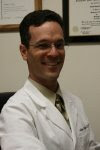This is probably the most common question that patients never ask. If you could recall your first appointment with us, you probably wanted to ask it too.
Patients almost always want to know but will never verbalize their concerns.
What’s interesting is that there has been new research on the events that occur during a chiropractic adjustment. It seems that the results that we are looking for can be achieved in many different ways.
Ultimately, the goal is to restore normal range of motion to a joint. Traditional methods utilize force applied by the chiropractors’ hands to release pressure and tension that causes the limited range of motion. The advantage is that it works, but there is a fascinating thing that happens when the tension is released…there is a “pop” in the joint. The noise is a coming together of nitrogen bubbles inside the joint, kind of like opening a can of Coca-Cola after shaking it.
For some people, the popping scares them. They have images of bones snapping/braking etc. That’s a big misconception.
However, if we are able to divide the force of the adjustment into smaller, incremental forces over a longer period of time, you get the same result…increased range of motion.
The side issue of the “popping” does not occur during this slower adjustment.
So the profession has solved a concern that the public has. We’re still able to get great results, but now without the popping/twisting/touching portion.
You’d think people would be forming lines in our office, just waiting for this new technology. Some people are. This new technology that we have in our office, called the Arthrostim, has been awesome. Some people would have never considered seeing a chiropractor until they heard about this new style of adjusting.
On the other hand, it turns out some people don’t like the softer adjustment, stating that they don’t feel like anything was done. They almost need to hear a noise and feel something really move to know that something was done, regardless of the end result.
Nevertheless what is fascinating is how the various adjustments work. If one way doesn’t help you, another way might.
This is what makes practice fun and exciting. It’s like being a detective to learn what will work best for a particular patient.
Sunday, October 12, 2008
"Is this going to hurt?"
Subscribe to:
Post Comments (Atom)


No comments:
Post a Comment